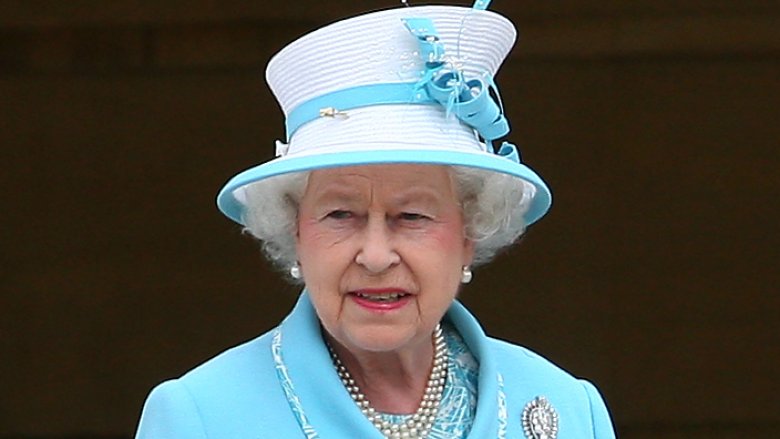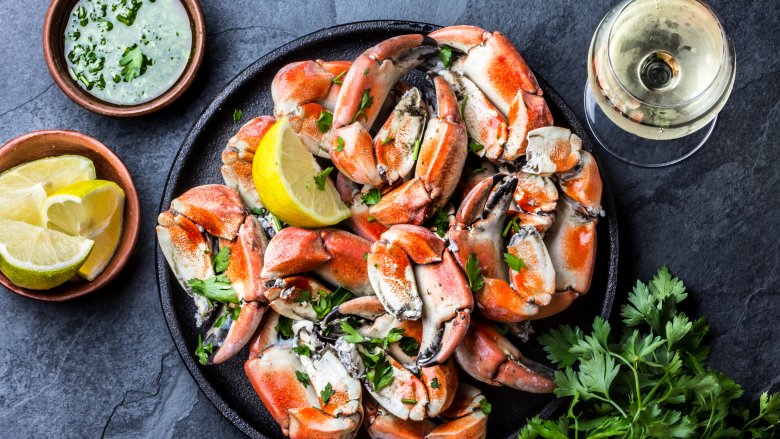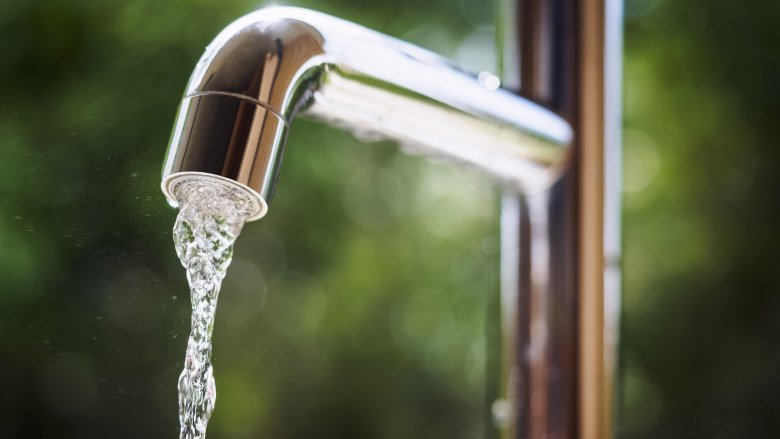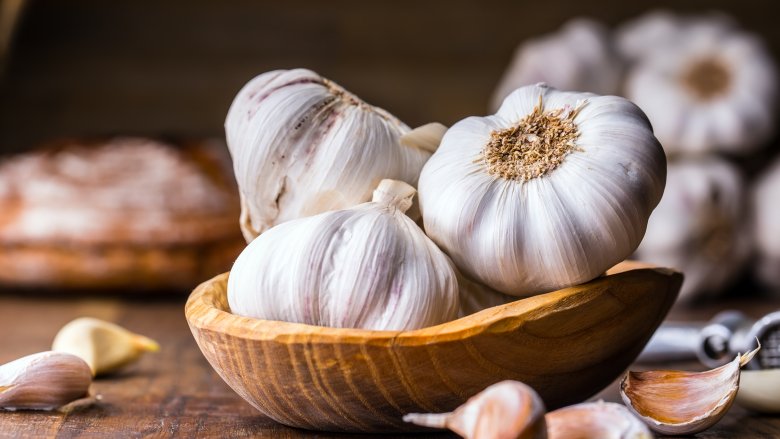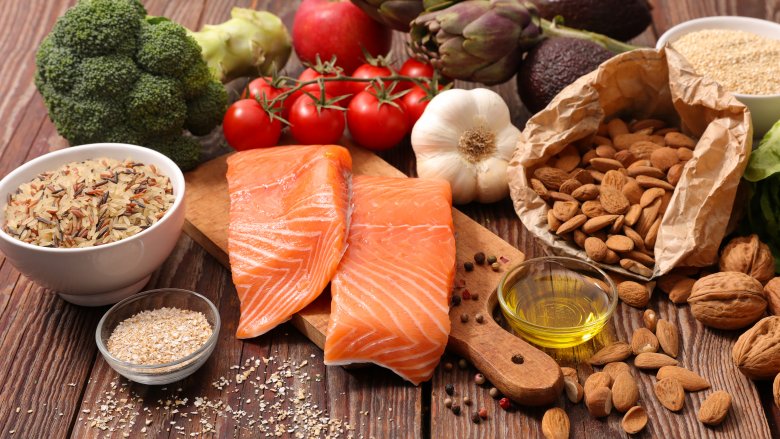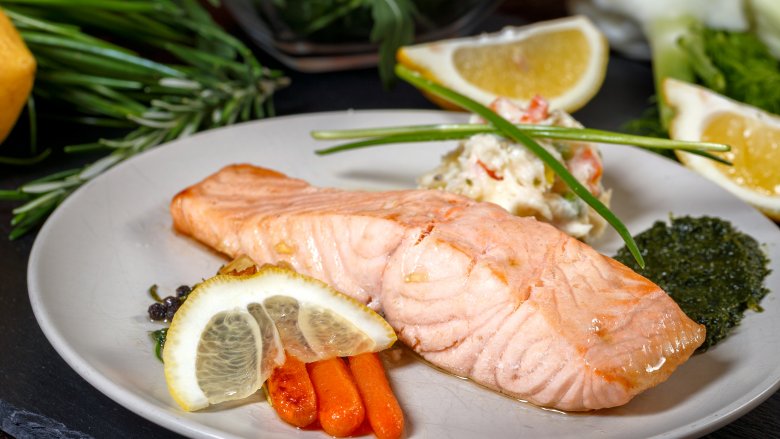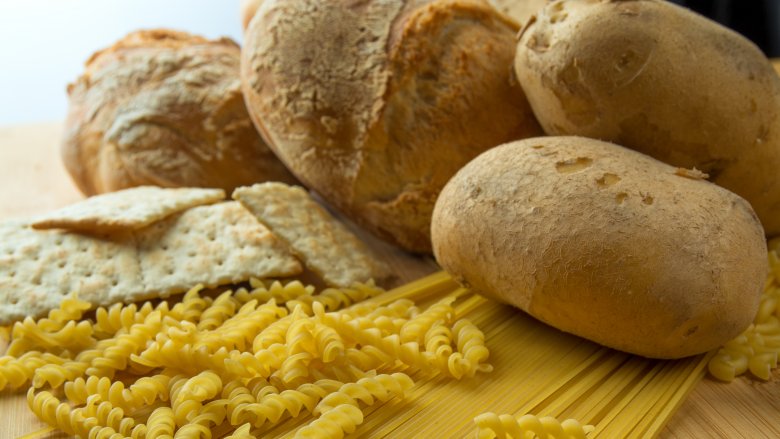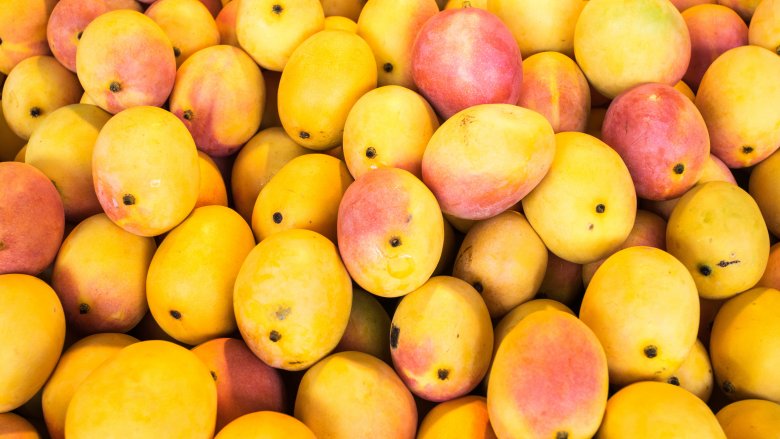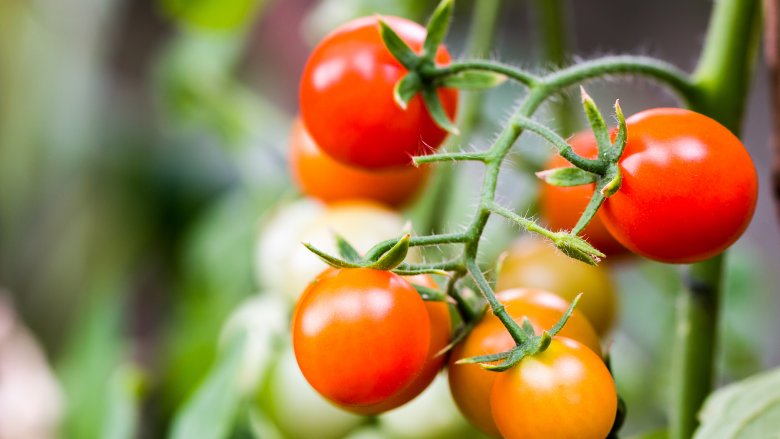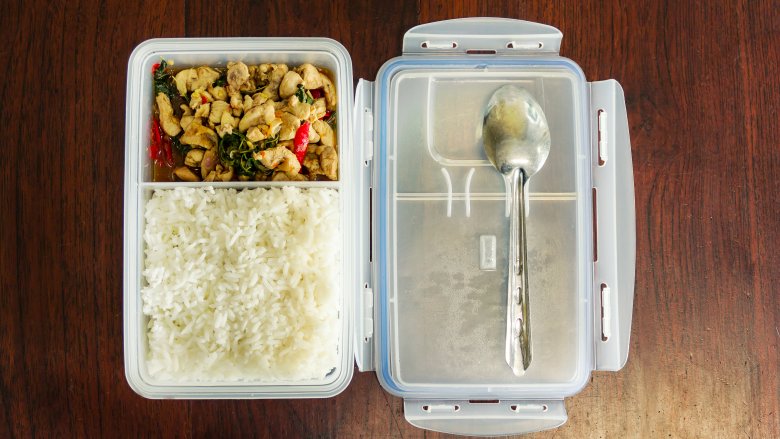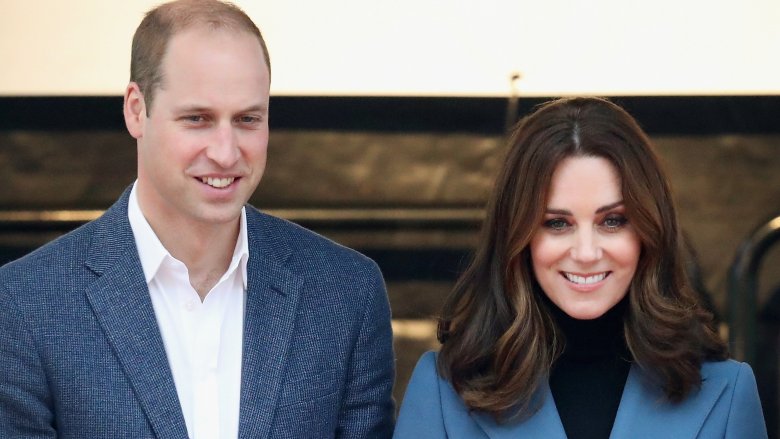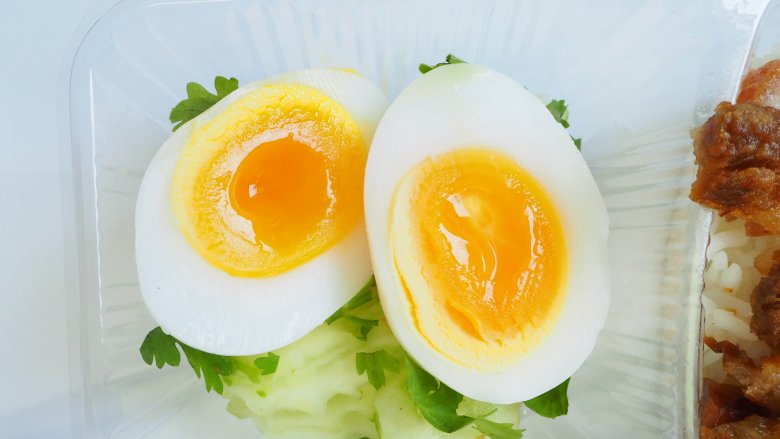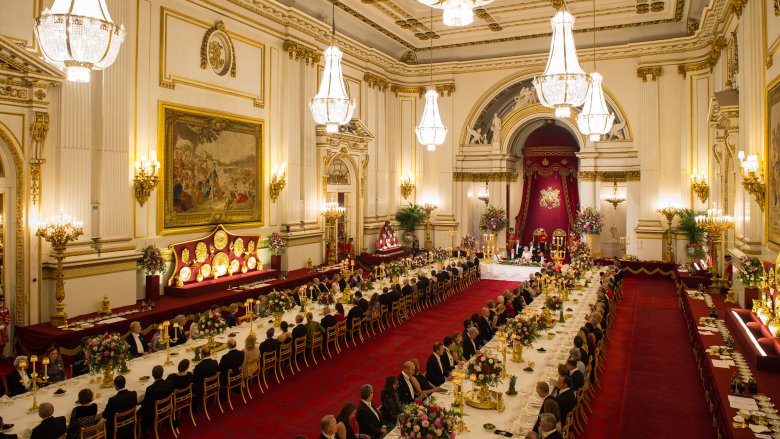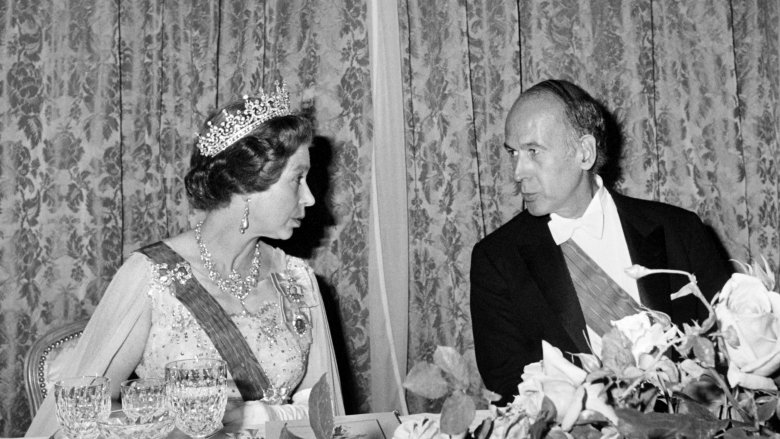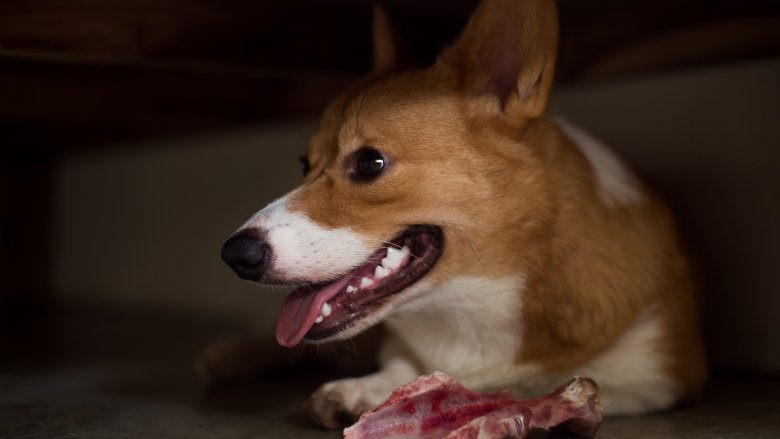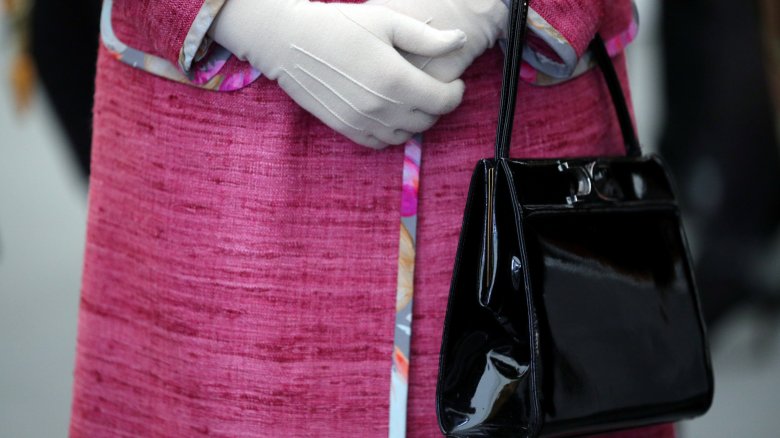What The Royal Family Eats
So you think you're fancy? You think that Michelin restaurant you visited last year is the pinnacle of choreographed, opulent dining? Think again. Perhaps unsurprisingly, the British royal family — you know, the most famous family on the planet, and one of the wealthiest, too — live an utterly unique gastronomic lifestyle.
It's not just the bizarre magnificence of their meals and traditions that proves fascinating about the royals, however, but also the day-to-day quirks each of them enjoys or insists upon. The media circus behind the family often makes it easy to forget that they're, you know, actual human beings, with foods they hate and silly little preferences and personal touches they like to add to their meals. And then, of course, there's stuff like the fact that they're not allowed to drink tap water. Seriously. It's a strange life.
Shellfish is forbidden
If you enjoy shellfish on occasion, then you've indulged in something the royals aren't allowed to enjoy. They're banned from lobster, crab, shrimp and the like, for the simple reason that it's just too much of a risk. Shellfish, of course, is a notorious source of food poisoning and the rigorous schedule and constant touring of the royals means that taking the risk of being put out of action for any period of time is a serious no-go. The same logic applies with other meats, and the leading members of the family are also forbidden from eating anything cooked rare.
Of course, rules are meant to be broken. Not by the Queen, of course — she adhered to the shellfish ban completely — but Prince Charles in particular is known to indulge in a little from time to time. Good on him.
Tap water is out too
It's common, when you travel abroad, to be warned against drinking the local tap water. Parasites and bacteria in unclean and untreated water can lead to a whole host of illnesses and diseases, including travelers' diarrhea. In the past, the Queen had visited Oman, the UAE, Thailand, Nepal, Morocco, Tunisia, Bahrain, Kuwait and a host of other countries with less than perfect water conditions — and that was just the Queen.
With that in mind, it's probably little surprise that tap water is on the list of things they're not allowed to consume abroad. After all, the last thing you want to hear as a foreign ambassador is that the royal who has at last visited your great nation has decided to take the day off because he or she has come down with a water-related stomach issue.
No garlic, either
Yes, you read correctly. Garlic — the spice of the gods, greatest of all the onion-likes — is, in fact, banned from Buckingham Palace. Unlike tap water or shellfish, however, that's not because it's a particular risk so much as it is because the Queen utterly forbade it. According to John Higgins, a former chef at the palace, nothing could ever be served for lunch or dinner with too much of the stuff (or with onions, for that matter). The theory goes that this is to avoid garlic's greatest side effect: Bad breath.
And this didn't just apply for the Queen, either — her palace-wide ban meant the whole family was missing out on garlic, solely to avoid any awkward garlic-based interactions with guests, visitors or foreign dignitaries. When you think about it, that's probably fair enough, but it's a big sacrifice to make.
They keep it healthy
You might have noticed, if you follow the royal family closely, that the Queen wasn't one to just sit at home during her long life. She was enthusiastic (or, at least, appeared to be) and maintained a significant presence in the public eye. Among other things, it's probably fair to assume her longevity came largely down to her insistence on eating healthily.
According to former chef Darren McGrady, the Royals are, generally, a healthy group of people. Both the Queen herself and Prince Philip were into healthy eating, while he says Prince Charles was "organic before organic was even invented." The latter, as well as his late wife Diana, kept to a rigorously healthy diet and mostly ate foods from entirely freshly-made ingredients, from bread to pasta to mayonnaise to ice cream.
The Queen was no foodie
Perhaps most surprising of all, considering the sheer grandeur of the lifestyle and some of the incredible banquets that are so often put on by the palace (or held elsewhere by the royals) is that the Queen really did not care that much about food. According to McGrady, she was the type who would eat to live rather than live to eat, and often, when alone, preferred a meal of grilled or poached fish or game with some vegetables or salad.
He goes on to recount a story in which he'd ask whether the kitchen equipment (much of which still remains from the 1800s) ought to be replaced, and being told that the money was better spent on new horses and saddles. As far as the Queen herself was concerned, big eating was strictly kept to the official occasions — of course, if you were living the life she was, you'd probably want to keep it simple every now and then, too.
Starch is off the lunch menu
One of the quirks revealed by former palace chef Darren McGrady, and one which is left largely unexplained, is that the Queen limited her starches when it came to her own lunches. This means that pasta, rice and potatoes are strictly off the cards when she dined alone — hence why the meal of poached fish and vegetables we mentioned above comes without the accompaniment of potatoes.
Not only this, but she also seemed to break her "no starch" rule when it came to sandwiches (which are usually cucumber, salmon or egg and mayonnaise) without the crusts on when she entertained lunchtime guests. Considering she usually ate lunch alone, this isn't exactly something that's enforced throughout the household. Still, though, you wouldn't have taken her for a fussy eater, would you?
But mousse and mangoes are in
So garlic, crusts and pastas are off the list — what, then, did the Queen like most? Well, for one, she was a bit of a chocolate freak, with chocolate mousse being a particular favorite for the monarch and her family. According to John Higgins, you could expect every plate to come back clean if mousse is on the menu. The Queen herself was also, apparently, incredibly fond of mangoes, to the point where she knew, at any one time, exactly how many were being kept in the fridges at Buckingham Palace.
It's fitting, then, that the dish of coronation chicken salad with mangoes and almonds was invented for the occasion of her ascension to the throne in 1953, and was served at her celebratory luncheon. So there you have it: mangoes and mousse. That's how you win the heart of a queen.
Almost everything is homegrown
It probably won't come as a huge shock to you to find out that the royals aren't down to the local supermarkets for their weekly shop. As a matter of fact, the vast majority of the ingredients used in their meals comes from their own estates. Carolyn Robb, who was personal chef to Charles and Diana, explains that Charles and Diana enjoyed game that was hunted by Charles personally, while they'd also grow their own fruit and vegetables for use in daily meals.
Lamb would come from the lambs they themselves kept, milk came from their cows and even mushrooms were picked wild from their own land. The Queen herself frequently ate beef, venison, pheasant, and salmon that was reared, caught or hunted on her own lands at Sandringham or Balmoral.
They don't waste a crumb
The royal family's thrifty ways don't end at them growing their own veg or hunting their own animals, however. According to Robb, Prince Charles was very particular about saving leftovers from meals, believing that nothing should go to waste. If there were leftovers from a meal, they'd be stored away in Tupperware and reused in a meal the following day. As an example, if there was leftover roasted lamb one night, the meal the next might well be shepard's pie.
Whether this practice extends across the rest of the royal family isn't known, but, considering the simplicity of the Queen's own diet and the tendency for royal chefs to be as economical as they are talented, it wouldn't be a huge surprise. Waste not, want not.
Kate cooks
It's a fairly time-honored tradition for members of the royal family to keep their own personal chefs, who will follow them around to each of their homes and estates and stay in charge of preparing and serving the meals that they eat. At the moment, however, an exception exists. Prince William, Kate Middleton and their children still maintain a relatively small household, meaning that they tend to fend for themselves as much as they can. As a result, they have no royal chef and Kate herself (and, likely, William) handles the cooking.
Carolyn Robb points out that Kate comes from a relatively normal background and is used to cooking for herself, while William enjoys the strange novelty of visiting her family and just eating together like normal people. For as long as they can manage it, they are likely to do something similar in their own home.
Charles' eggs have to be just right
When you first think of the quirks of the eating habits of the royal family, you can't help but wish you'd come across something utterly bizarre, prissy to the extreme and fussy like only a royal could be. It's a shame, then, when you find out that they like home-grown, healthy food, eat sandwiches for lunch and often cook for themselves. Still, that's not to say that it's all quite completely normal.
You've got Prince Charles to thank for this one: according to Mervyn Wycherley, another private chef to Charles and Diana, the prince would insist that his eggs had to be boiled for exactly four minutes, every single time. Not five minutes; not three minutes — four minutes. This was so stringently enforced that his security detail would radio ahead to the kitchen to let them know that he's heading home, and three pans were always kept boiling, just in case. It's good to know they're not completely normal.
Nobody ate until the Queen was ready
Much of what we've been through so far has dealt with how the royals eat privately, either alone or with each other. Everything changes, however, when it comes to public occasions. The etiquette behind how, when and what you eat is strictly enforced and dates back hundreds upon hundreds of years.
For starters, according to ex-butler Paul Burrell, you don't eat until the King (Charles) or the former Queen (Elizabeth) is ready. You're also supposed to stop eating when they do. Essentially, you take every cue from the monarch, including when to sit and when to stand. The whole thing becomes an elaborate, culinary ballet in which it's vital to know what to do and how to do it, and messing up can be seen as a major social faux pas. So be careful.
Conversation isn't taken lightly
Conversation, too, was basically an art during lunches and dinners attended by the Queen. In 2015, Formula 1 driver Lewis Hamilton fell afoul of the palace's delicate etiquette when he started speaking to the monarch, who was sat to his right, at the wrong time. In fact, the Queen always spoke to her guest of honor — seated on her right — for the duration of the first course. The other women are to follow suit. After this, she would speak to the guest on her left.
What results is a carefully-orchestrated, choreographed form of table manners which is specially designed to encourage a flow of conversation. Get it wrong, however, and, like Hamilton, you can find yourself on the other end of a royal chiding.
Everyone eats well, and we mean everyone
Considering the Queen's famous love of animals, this probably won't be surprising, but it's always nice to know nonetheless. The animals of Buckingham Palace, and the other royal estates, eat just as well as the humans. Royal chef Owen Hodgson claims to have once simmered rabbit and cooked chicken into a fine terrine which was, in the end, fed to the Queen's own corgis.
Meanwhile, one of Darren McGrady's early kitchen jobs was peeling carrots to perfection for the Queen's horses, with it being well understood by the staff that, should a horse bite the Queen's fingers because a carrot wasn't just long enough, the blame would fall squarely on the shoulders of the chefs in the kitchen. No pressure, then.
You had to keep an eye on the Queen's purse
So, let's say you hit gold — you're at the palace, having been invited over for dinner and a cheeky glass of bubbles, you're chatting away (to the guest on your right, of course) and, when you glance over at the Queen, you notice that she's got her handbag on the table. God, how utterly rude.
Except, like everything else that went on in her life, this too is a ritual. If the Queen placed any one of her 200 Launer handbags on the table, that's regarded as a signal that she wanted the event to end in the next five minutes. If you saw it, eat up or drink up — you probably didn't have long. If she placed it on the floor, it meant she was not enjoying the conversation and wished to be rescued by her lady-in-waiting, so if you saw that, well, it would have been advised to try chatting about something a little more interesting. The Queen did not mess.
